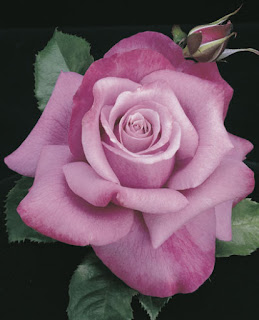 |
| Autumn Leaves,by Norma Boeckler |
We started on the wild garden yesterday. I now covet cardboard more than newspaper. Cardboard boxes cover a large area at once and resist weed invasions more effectively. So we were putting cardboard around the dead tree stump and using boxes of newspapers as well. The area will be taken over by honeysuckle vine next year and use the tree stump as a base. The back third of the backyard will be planted for bees, beneficial insects, butterflies, and birds - with an emphasis on self-seeding plants (like Feverfew), spreading plants (like Trumpet Vine and Honeysuckle Vine), and robust plants that make room for themselves (Bee Balm, Milkweed, Butterfly Weed).
 |
Our helper said, "Why are the roses so big in the front yard but not blooming so well back here?"
I was quite happy with the row along the Gardeners' fence. They have a soaker hose and plenty of sun, several layers of newspapers, and wood mulch. "But the main rose garden has an extra year of rotting paper and wood, earthworm growth, and rose roots getting established. Wait until next year, when they are just as established."
Five rules of rose gardening:
- Red wiggler earthworm them.
- Mulch them.
- Prune them often.
- Water them when needed.
- No poisons in the yard. Grow beneficial insect plants instead.
 |
I started in the front with eight bargain roses and eight KnockOut roses. We dote on that area, with weeding, watering, and pruning. Red wiggler earthworms have been placed there three times, a bit excessive, but a bargain for these legal immigrants. It is said that America became far more productive when European settlers brought over these worms in the plants and animal hooves - Better Grassland Sward. To emphasize this, those who love pine forests are disturbed that fishermen toss their extra worms aside and change the soil (sweeten it) without thinking of the effects. Pine forests like acid soil and pine needle mulch encourages that environment. Earthworms sweeten the soil with their calciferous glands.
So the KnockOut roses have an extra year of the roots making deals with fungus in the soil. More pruning has also generate more root growth. I have removed 50% of the top growth three times, resulting in 6 foot tall KockOut roses going into full bloom, with about 40 roses on each one - or 320 roses in bloom at once (fairly soon).
Several readers have asked for photos. My photos will not be like the rose catalog ones, but they will give an idea of the layout and some blooms.
 |
| Add caption |
Aha! Proof Against Evolution
I am a hard-working gardener with nothing but the best intentions for the garden. Therefor, my vegetable garden is proof against evolution. Weeds took over and the pests (slugs, rabbits, squirrels) made merry all summer, giving some tomatoes, a few ears of corn, and little else.
All my efforts could not overcome the power of Creation. It was the year of the slug, the year of massive rains and long dry spells, the year of rabbits and squirrels running riot and retreating to their peaceful havens to breed even more. Chiggers and mosquitoes feasted on my tired blood, and weeds of all varieties burst through the mulch to defy efforts to tame them.
One gardener said to me, "Don't take it personally. We have all been swamped with weeds this year."
Nevertheless, the roses have been a delight for everyone all summer. The neighbors love them and they get plenty of bouquets. After photography today, two families will get some.
Our helper takes them home too, and now he knows that the newly opening roses are the best and last the longest in the vase.

